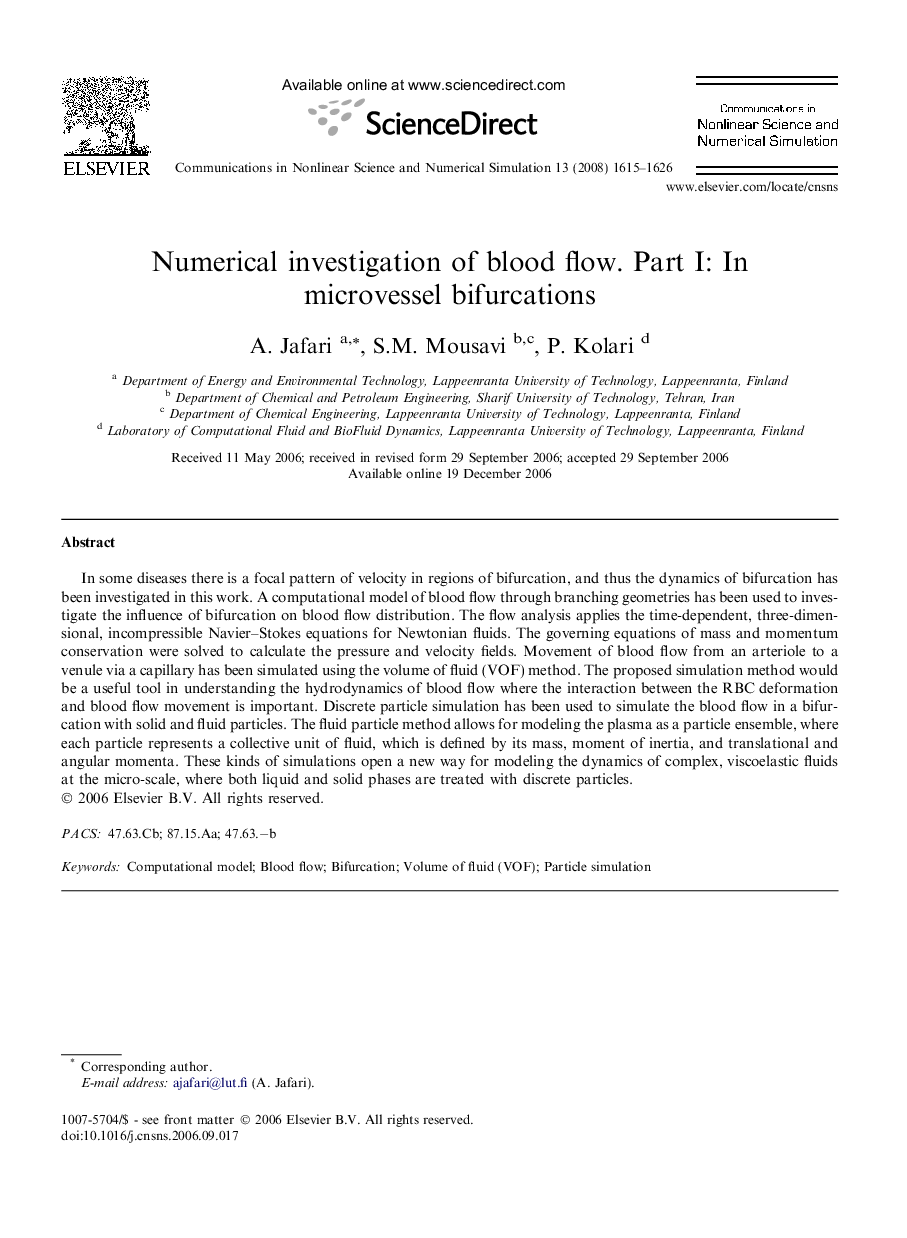| Article ID | Journal | Published Year | Pages | File Type |
|---|---|---|---|---|
| 756260 | Communications in Nonlinear Science and Numerical Simulation | 2008 | 12 Pages |
In some diseases there is a focal pattern of velocity in regions of bifurcation, and thus the dynamics of bifurcation has been investigated in this work. A computational model of blood flow through branching geometries has been used to investigate the influence of bifurcation on blood flow distribution. The flow analysis applies the time-dependent, three-dimensional, incompressible Navier–Stokes equations for Newtonian fluids. The governing equations of mass and momentum conservation were solved to calculate the pressure and velocity fields. Movement of blood flow from an arteriole to a venule via a capillary has been simulated using the volume of fluid (VOF) method. The proposed simulation method would be a useful tool in understanding the hydrodynamics of blood flow where the interaction between the RBC deformation and blood flow movement is important. Discrete particle simulation has been used to simulate the blood flow in a bifurcation with solid and fluid particles. The fluid particle method allows for modeling the plasma as a particle ensemble, where each particle represents a collective unit of fluid, which is defined by its mass, moment of inertia, and translational and angular momenta. These kinds of simulations open a new way for modeling the dynamics of complex, viscoelastic fluids at the micro-scale, where both liquid and solid phases are treated with discrete particles.
